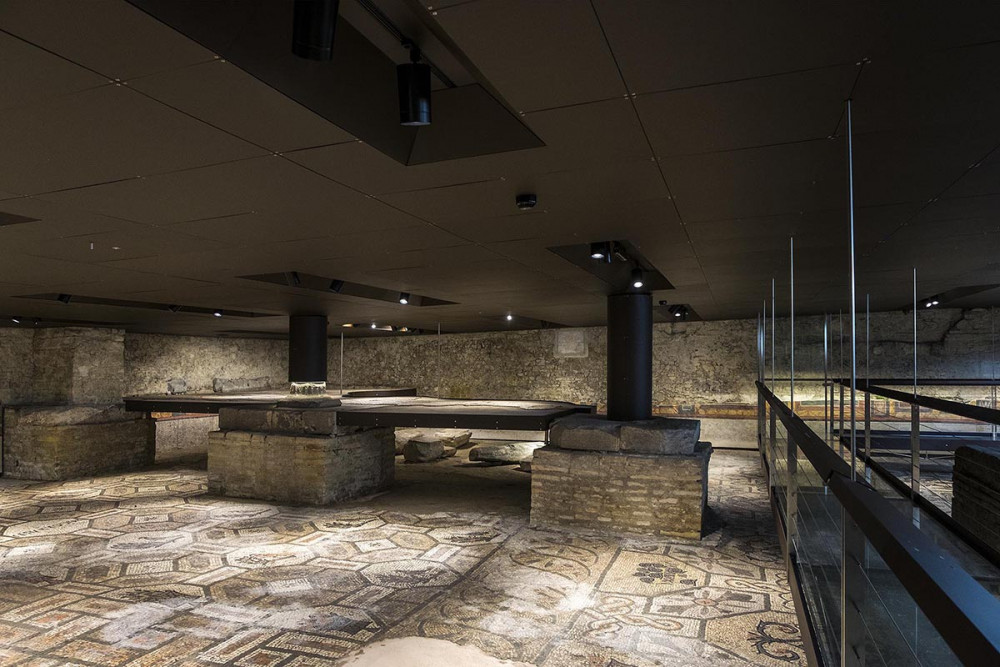The Basilica of Aquileia makes an extraordinary architectural complex. The church today is essentially the result of the architectural works promoted by bishop (patriarch) Poppo (1019- 1042), who consecrated it in 1031. However, its origins go back to the second decade of the 4th century. By the end of the same century, under the rule of bishop Chromatius, the edifice had grown into the current dimensions, except for the transept and apse with the underground crypt.
A remarkable construction step comes in the early 9th century, under Patriarch Maxentius, who added a porch (originally on two floors) to connect the basilica with the Pagans’ Church, as well as the two jutting portions of the transept, and the apse.
The reorganization promoted by Poppo in the 11th century included the refurbishing of the façade with a central mullioned window, and the fresco decoration of the apse. The two sets of 10 columns were provided with new capitals and a 73 m-high campanile was erected. Further works were carried out after an earthquake in 1348.
In 1909 the floor of Poppo’s times was excavated up to the sanctuary portion to bring to light a mosaic floor belonging to the church erected during the rule of emperor Constantine, which was lying about one metre below.
• Mosaic floor: the mosaic floor of the basilica, discovered between the late 19th century and the first decades of the 20th century, offers a most stunning evidence of the original place of worship built under the initiative of bishop Theodore immediately after the Edict of Toleration of 313 AD. The church used to include two parallel halls (the second one can be seen in the Crypt of the Excavations), a connecting hall, an elliptic baptistery (no more visible today) and several rooms, probably related to the bishop’s residence.
• Seven hundred and sixty square metres wide, the mosaic of Theodore’s southern hall makes the largest mosaic floor of the Roman West. Divided in four sections and bearing an inscription with Theodore’s dedication, the mosaic offers, with its allegories and images not always easily interpreted, an ideal itinerary towards Salvation. In particular, the eastern section is entirely covered with the representation of the biblical story of Jonah.
• Crypt of the frescoes: the crypt lying below the main altar of the basilica dates back to the time of patriarch Maxentius (9th century) and was created as a shrine to hold the relics of martyrs Hermagoras and Fortunatus from Aquileia. The walls are decorated with 12th century frescoes depicting the legend of Saint Mark the Evangelist.

• Crypt of the excavations: excavations here have made visible the foundations of Poppo’s campanile standing on the mosaics of Theodore’s northern hall (early 4th century).

The basilica complex also includes the campanile erected by patriarch Poppo in the 11th century, a model for other similar constructions in Friuli and Istria alike; the baptistery built under bishop Cromatius in the 4th century, with a hexagonal basin inside an octagonal structure; the so-called Südhalle, i.e. the southern hall of the early Christian baptistery recently turned into a museum, with over three hundred square metres of mosaic floor dated between the late 4th and early 5th centuries, and the wonderful mosaic “of the Peacock” coming from the narthex area of the basilica.
Visit the website dedicated to the Basilica of Aquileia http://basilicadiaquileia.it/it/basilica


